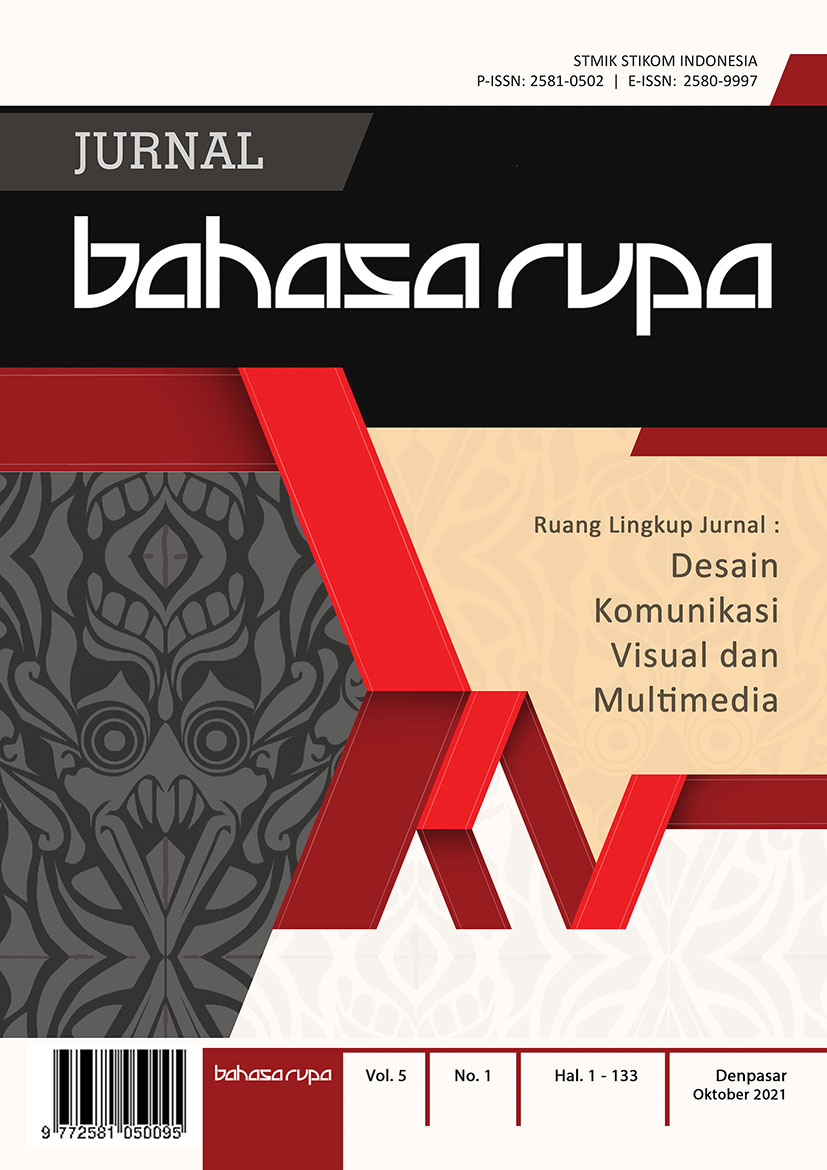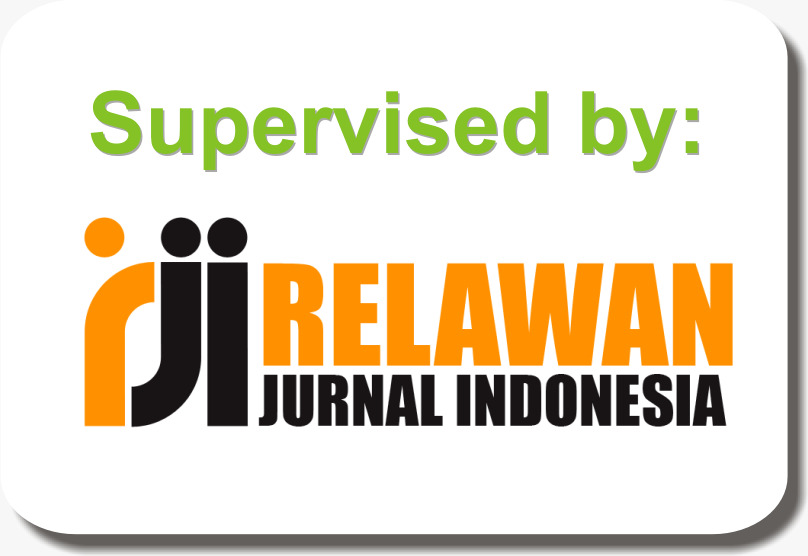NEW NORMAL DALAM PESAN IKLAN TV KOMERSIAL TRAVELOKA
DALAM PESAN IKLAN TV KOMERSIAL TRAVELOKA
DOI:
https://doi.org/10.31598/bahasarupa.v5i1.793Keywords:
Advertising, New normal, TV Commercials MessagesAbstract
This article aims to know the display and narrative new normal in the Traveloka Commercial TV ad message regarding a new way of life in relation to the Covid 19 pandemic. Using a qualitative approach with narrative analysis; how do communicators tell stories, this research was conducted. Through observation of Traveloka #JalanBersamaAnda TV advertising material and literature study, data collection techniques were carried out. One by one, analyzing each frame and duration of advertisements and selecting and classifying them according to the research focus for data presentation. The finding in this article is that Traveloka commercial TV commercials carry #JalanBersama as the big idea foundation. Presenting ten visual stories of environmental atmosphere and some unusual daily activities of people in early 2020 related to the COVID-19 pandemic.
References
Indonesia.go.id, “Mengenal Konsep New Normal,” 2020. [Online]. Available: https://indonesia.go.id/ragam/komoditas/ekonomi/mengenal-konsep-new-normal. [Accessed: 15-Jun-2020].
A. N. Yahya, “Ini Kunci Utama agar Adaptasi Kebiasaan Baru Berjalan Efektif,” 2020. [Online]. Available: https://nasional.kompas.com/read/2020/06/17/19075631/ini-kunci-utama-agar-adaptasi-kebiasaan-baru-berjalan-efektif. [Accessed: 15-Jun-2020].
CNN Indonesia, “Muhammadiyah Tak Sepakat dengan Konsep New Normal,” 2020. .
J. Fawaid, “Cermat Menerapkan New Normal,” 2020. [Online]. Available: https://news.detik.com/kolom/d-5036963/cermat-menerapkan-new-normal. [Accessed: 15-Jun-2021].
G. Em, L. Andrew, and S. Glenn, A First Look at Communication Theory 10th Edition. New York: McGrow-Hill Education, 2019.
S. Alex, Komunikasi Naratif: Paradigma, Analisis, dan Aplikasi. Bandung: Remaja Rosdakarya, 2016.
M. Sandra, M. Nancy, W. Charles, and W. William, Advertising & IMC; Principles & Practice. New York: Pearson, 2017.
L. Monle and J. Carla, Prinsip-Prinsip Pokok Periklanan Dalam Perspektif Global. Jakarta: Kencana, 2007.
A. R Reza El and G. Rohmat, “IbM Pelatihan Multimedia Untuk Anak-anak Yatim Piatu Di Panti Asuhan Hifdhul Mursalin Kota Tasikmalaya.,” Siliwangi, vol. 2, no. 1, pp. 69–73, 2016.
S. Ilona V. Oisina, “Pengaruh Daya Tarik Iklan Televisi Cosmetik Wardah Terhadap Keputusan Pembelian,” J. Komun. Pembang., vol. 11, no. 2, pp. 1–13, 2013.
Eriyanto, Analisis Naratif : Dasar-Dasar dan Penerapannya Dalam Analisis Teks Berita Media, 1st ed. Jakarta: Kencana Predana Media Group, 2013.
M. Sultan, “Studi Paradigma Naratif Walter Fisher Pada Aktivitas ‘Nongkrong’ di Kalangan Remaja Madya,” J. Al-Khitabah, vol. 3, no. 1, pp. 88–102, 2017.
F. A. Trisakti and H. Alifahmi, “Destination Brand Storytelling: Analisis Naratif Video The Journey to A Wonderful World Kementerian Pariwisata,” J. Komun. Indones., vol. 7, no. 1, pp. 73–86, 2018.
Sugiyono, Metode Penelitian Kombinasi (Mixed Methods). Bandung: Alfabeta, 2013.
Traveloka, “Di Tahun Penuh Kata ‘Pertama’, Traveloka #JalanBersama Anda,” Youtube, 2020. .
A. R. Wicaksono, V. I. Kristianto, and M. Wachid, “Komposisi Warna Website Universitas Kelas Dunia , Studi Kasus Harvard University , University of Cambridge Dan,” vol. 1, no. 1, pp. 70–75, 2013.
S. Purnama, “Elemen Warna Dalam Pengembangan Multimedia Pembelajaran Agama Islam,” J. Pendidik. Dasar Islam, vol. 2, no. 1, pp. 113–130, 2010.
Monica and L. C. Luzar, “Efek Warna dalam Dunia Desain dan Periklanan,” Humaniora, vol. 2, no. 2, p. 1084, 2011.
Downloads
Published
How to Cite
Issue
Section
License
Copyright (c) 2021 Agus Hermanto, Sa’diyah El Adawiyah, Cecep Effendi, Tria Patrianti

This work is licensed under a Creative Commons Attribution-NonCommercial-ShareAlike 4.0 International License.
The author's copyright in the Bahasa Rupa Journal, assigns that the publication of published articles is owned by the editorial board with the author's approval, but the rights are still with the author. The legal rules for accessing digital electronic articles are under license  Attribution-NonCommercial-ShareAlike 4.0 International (CC BY-NC-SA 4.0), which means that the Bahasa Rupa Journal has the right to store, modify, manage databases, maintain and publish articles without the author's permission, but the author as the copyright holder is still written as it is. Articles published in Bahasa Rupa Journals, both in hard and soft copy forms are available as open access, for educational, research and library purposes, and beyond that purpose, the editorial board of the Language and Language Journal is not responsible for illegal copyright infringement. This journal also applies LOCKSS and CLOKSS archiving.
Attribution-NonCommercial-ShareAlike 4.0 International (CC BY-NC-SA 4.0), which means that the Bahasa Rupa Journal has the right to store, modify, manage databases, maintain and publish articles without the author's permission, but the author as the copyright holder is still written as it is. Articles published in Bahasa Rupa Journals, both in hard and soft copy forms are available as open access, for educational, research and library purposes, and beyond that purpose, the editorial board of the Language and Language Journal is not responsible for illegal copyright infringement. This journal also applies LOCKSS and CLOKSS archiving.













.png)





